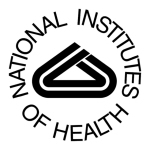NIH Holds State of the Science Conference on Colorectal Cancer Screening
by
Astrid Fiano, DOTmed News Writer | February 10, 2010

An important update
on colorectal cancer
The National Institutes of Health (NIH) recently held a State-of-the-Science Conference on Enhancing Use and Quality of Colorectal Cancer Screening. The event took place in Bethesda, MD. The conference featured several speakers on a diverse range of topics including recent trends in the use and quality of colorectal cancer screening; factors influencing use of colorectal cancer screening; effective strategies to increase appropriate use of colorectal screening; current and projected capacities to deliver the screening; and effective approaches for monitoring use and quality.
In the background materials for the Conference, the NIH points out that colorectal cancer is the second leading cause of cancer-related deaths in the U.S., and that approximately 50,000 people in the U.S. died from colorectal cancer in 2009.
Some of the highlights presented include:
For trends in use, research indicated that average-risk adults aged 50-75 who are up to date with colorectal cancer screening increased from 39% in 2000 to 55% in 2008. The screening rates covered most population subgroups. However, the rates did not increase for those individuals who had no physician visits in the past year, no usual source of care, or who lacked health insurance coverage. The rise primarily appears to be in the use of colonoscopy. Fewer primary care physicians reported recommending FOBT (fecal occult blood test), sigmoidoscopy or DCBE (double-contrast barium enema ) to asymptomatic average-risk patients in 2007 than in 2000. However, primary care physicians routinely recommending colonoscopy rose from 38% in 2000 to 95% in 2007. The authors of this study found that primary care physicians have "essentially stopped performing sigmoidoscopy," although the test is still in guidelines as a colorectal cancer screening test option.
Another study discussed computed tomographic (CT) colonography in hospitals. This procedure is a fairly new method of screening, and in 2008, the American Cancer Society included CT colonography as a recommended option for the first time. The authors say the results from a 2007 trial indicate CT colonography may be as effective as optical colonoscopy in screening. For those hospitals offering the service, factors included the ability to provide an alternative for patients with a failed colonoscopy or those unable to undergo optical colonoscopy, the long wait period for optical colonoscopy, addressing low screening rates in the community, and the promise of CT colonography as an effective screening procedure.
One presentation focused on intervention strategies in diverse populations. Disparities in racial/ethnic and socioeconomic groups for colorectal cancer incidence, stage at diagnosis, survival, and mortality, as well as screening, are well known. The authors found that interventions for minority populations conducted in clinical settings have been an effective strategy. However, because many minority individuals either do not have health insurance or regular contact with a health provider, or are eligible for Medicare or other public programs, more testing is needed on the effectiveness of community-based outreach approaches connecting those persons to available free or low-cost services. One problem noted in the approach is that free/low-cost services generally cannot offer endoscopic procedures (colonoscopy), the procedure of choice.
The materials from the Conference may be accessed at: http://consensus.nih.gov/2010/colorectalabstracts.htm#background
